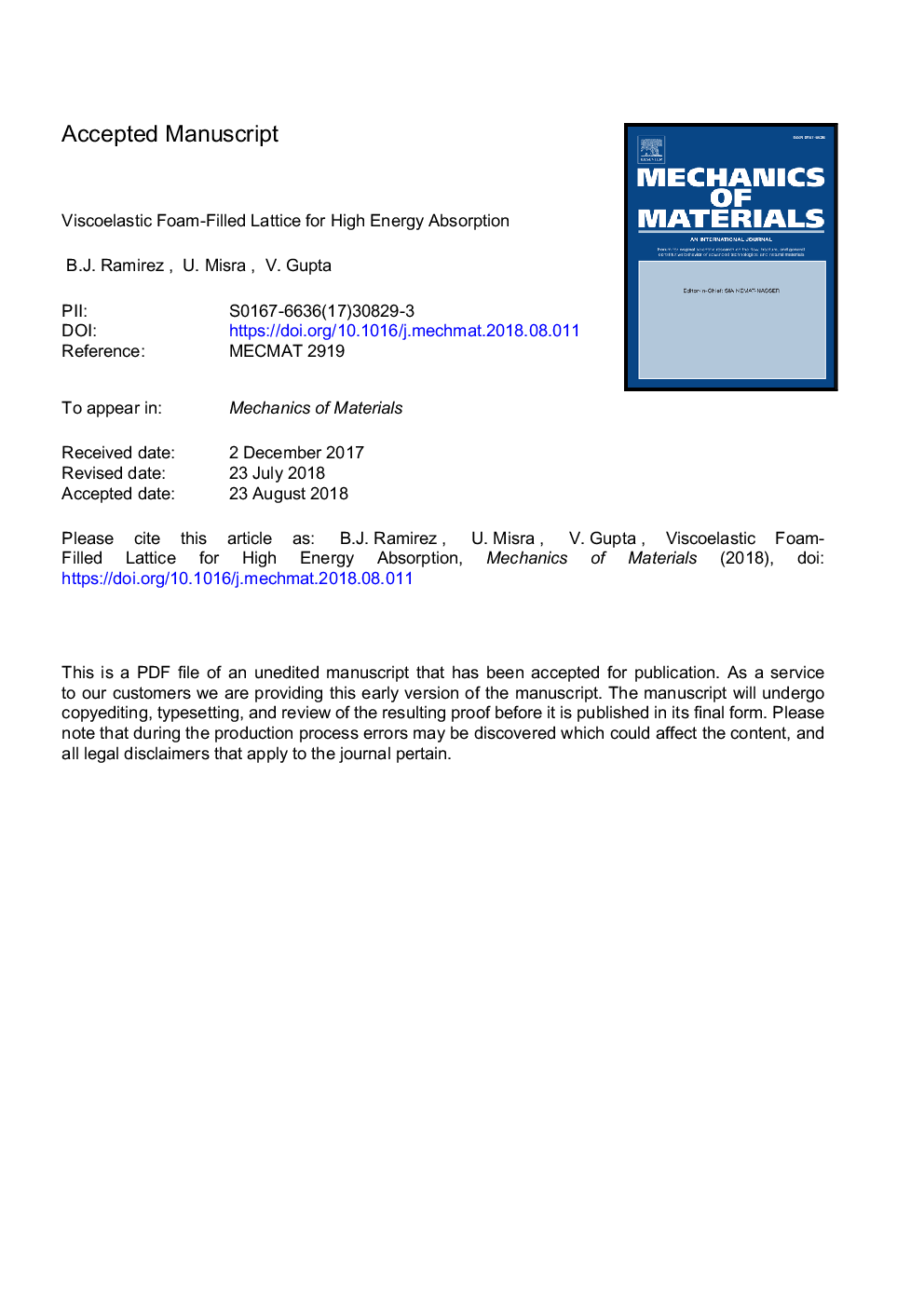| Article ID | Journal | Published Year | Pages | File Type |
|---|---|---|---|---|
| 10146776 | Mechanics of Materials | 2018 | 31 Pages |
Abstract
A new composite foam concept that involves infiltrating a polyurea-based foam through an open 3D lattice structure with 2â¯mm strut size is presented. The stress-strain characteristics, energy absorption, and cushioning efficiency are measured at quasi-static and dynamic strain rates using an Instron load frame and a drop tower facility, respectively. Results are compared with EPS72 (expanded polystyrene foam with a density of 72â¯kg/m3) and Poron320 (density of 320â¯kg/m3) foams that represent high performance benchmarks for foams that absorb impact energy through plastic crushing and rate-induced glass transition mechanisms, respectively. The composite foams absorb more impact energy in same section thickness, while keeping both the peak stress and impulse duration low compared to these benchmarks. Most importantly, the composite foams display stability at both low (0°C) and high temperatures (40°C) because of its extremely low Tg ofâ¯ââ¯50°C. Being viscoelastic, they recover fully within 30â¯s after each impact, without loss of any energy absorption capability. The underlying microstructural mechanisms for these superior impact properties are also discussed. These properties should allow these materials to have a wide range of military and civilian applications, especially in advance armors and protective body and headgear systems.
Related Topics
Physical Sciences and Engineering
Engineering
Mechanical Engineering
Authors
B.J. Ramirez, U. Misra, V. Gupta,
